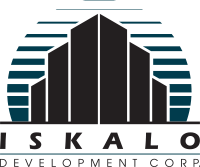Modern developers are shifting towards mixed-use development design to accommodate our growing urban centers and the popular live-work-play lifestyle. Mixed-use development offers a number of economic and environmental advantages for urban cities.
What is Mixed-Use Development?
Mixed-use development projects provide more than one use or purpose within a shared building or development area. The development is characterized by a walkable, pedestrian-friendly environment that blends two or more residential, commercial, retail, medical, hospitality or industrial uses. Mixed-use development design focuses on enriching the local community and economy while improving the environment and public health.
Mixed-use zoning allows for the horizontal and vertical combination of property uses in an area to build an environment where local residents can live, work, eat and play. These development projects may vary in scale and occupancy, depending on the need of a community. Some mixed-use projects may consist of a single building occupied by a retail shop on the ground level and apartments on the upper levels while others may have multiple buildings and businesses forming an “urban village.”
Impacts of Mixed-Use Development Design
Mixed-use development projects are designed with careful planning, intention and thought. These curated spaces offer vibrant communities within their cities, while encouraging sustainable urban development. Mixed-use development design has the ability to adapt to its context, and provide better integration with the city’s public transportation services, stronger neighborhoods and improved energy efficiency.
Mixed-use spaces are designed to give renters an all-inclusive living experience with businesses, retail shops, restaurants, entertainment, and more all within walking distance of their apartments.
Mixed-use development supports the local economy in multiple ways. These development sites encourage local businesses to establish storefronts where they can benefit from foot traffic. Employees and residents spend their earnings locally at restaurants and stores nearby. These individuals will enjoy the benefits of using public transportation to get around, rather than owning cars.

